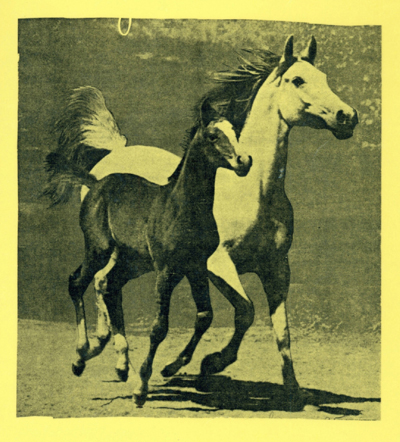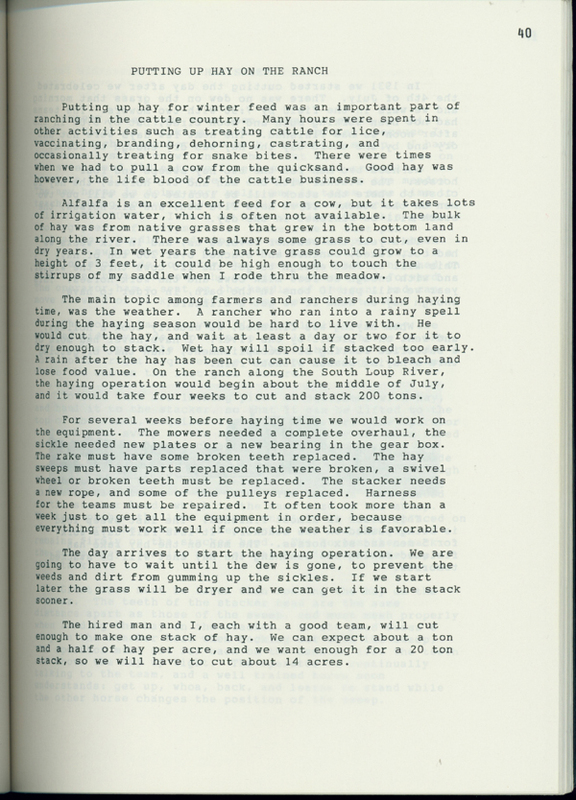083
Item
-
Title
-
083
-
Transcription
-
PUTTING UP HAY ON THE RANCH
Putting up hay for winter feed was an important part of ranching in the cattle country. Many hours were spent in other activities such as treating cattle for lice, vaccinating, branding, dehorning, castrating, and occasionally treating for snake bites. There were times when we had to pull a cow from the quicksand. Good hay was however, the life blood of the cattle business.
Alfalfa is an excellent feed for a cow, but it takes lots of irrigation water, which is often not available. The bulk of hay was from native grasses that grew in the bottom land along the river. There was always some grass to cut, even in dry years. In wet years the native grass could grow to a height of 3 feet, it could be high enough to touch the stirrups of my saddle when I rode thru the meadow.
The main topic among farmers and ranchers during haying time, was the weather. A rancher who ran into a rainy spell during the haying season would be hard to live with. He would cut the hay, and wait at least a day or two for it to dry enough to stack. Wet hay will spoil if stacked too early. A rain after the hay has been cut can cause it to bleach and lose food value. On the ranch along the South Loup River, the haying operation would begin about the middle of July, and it would take four weeks to cut and stack 200 tons.
For several weeks before haying time we would work on the equipment. The mowers needed a complete overhaul, the sickle needed new plates or a new bearing in the gear box. The rake must have some broken teeth replaced. The hay sweeps must have parts replaced that were broken, a swivel wheel or broken teeth must be replaced. The stacker needs anew rope, and some of the pulleys replaced. Harness for the teams must be repaired. It often took more than a week just to get all the equipment in order, because everything must work well if once the weather is favorable.
The day arrives to start the haying operation. We are going to have to wait until the dew is gone, to prevent the weeds and dirt from gumming up the sickles. If we start later the grass will be dryer and we can get it in the stack sooner.
The hired man and I, each with a good team, will cut enough to make one stack of hay. We can expect about a ton and a half of hay per acre, and we want enough for a 20 ton stack, so we will have to cut about 14 acres.
-
Rights
-
To inquire about usage, please contact Archives & Special Collections, University of Nebraska-Lincoln Libraries. These images are for educational use only. Not all images are available for publication.
 Metzger Memories
Metzger Memories


